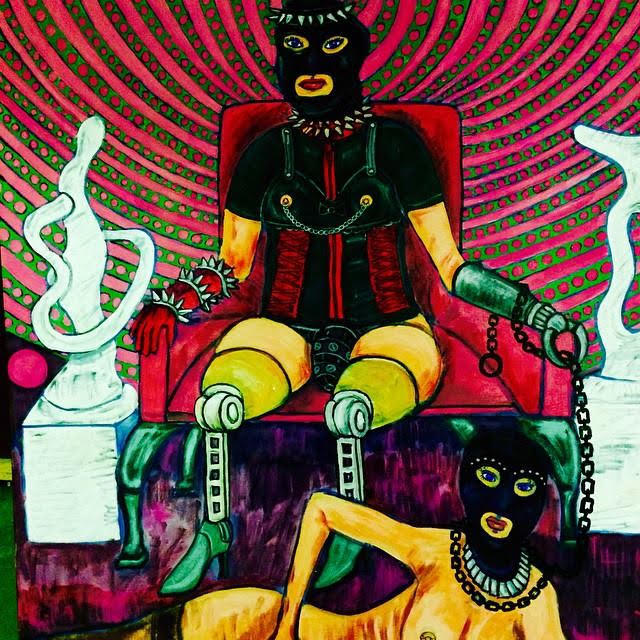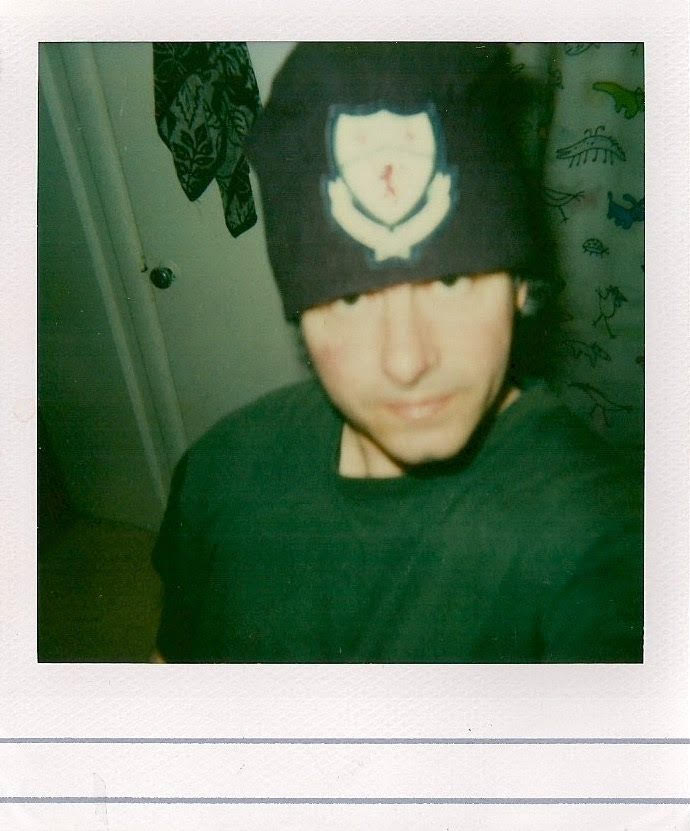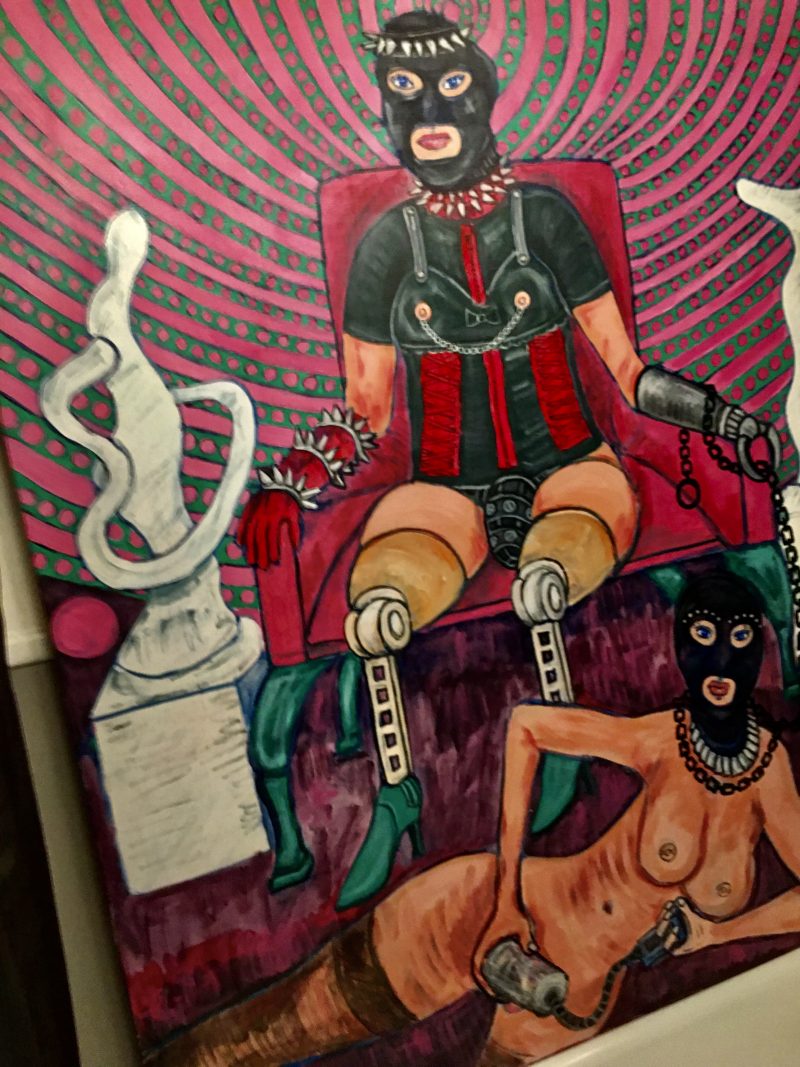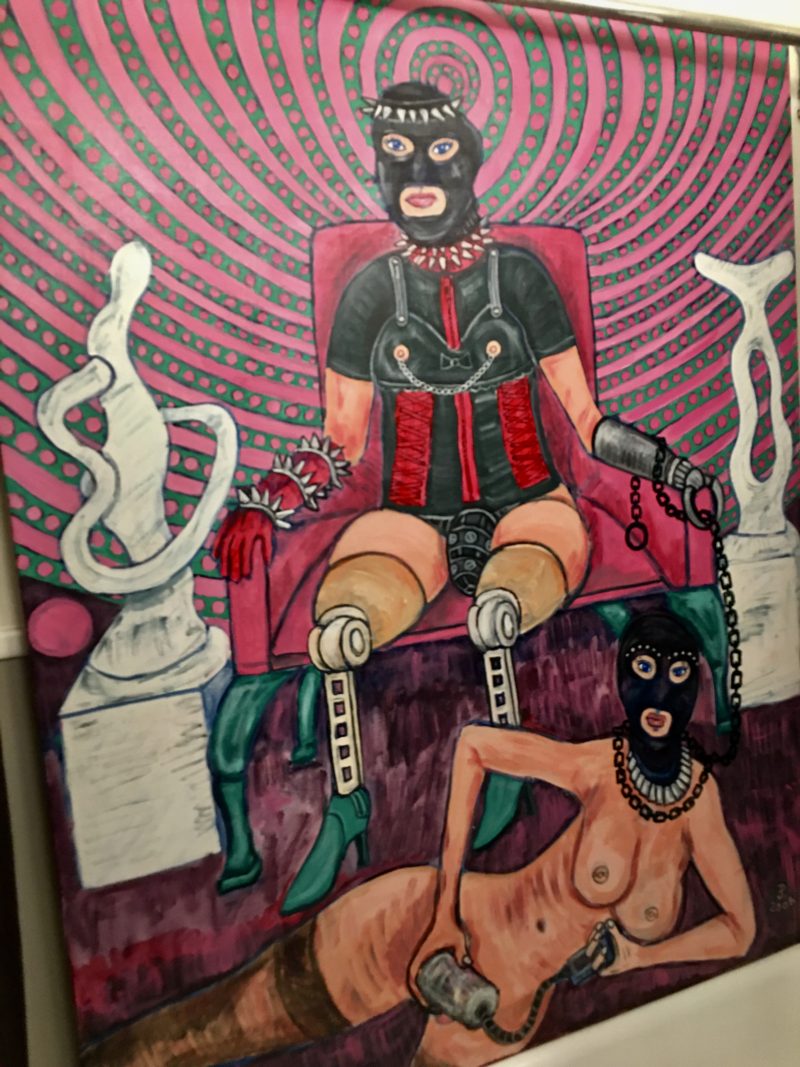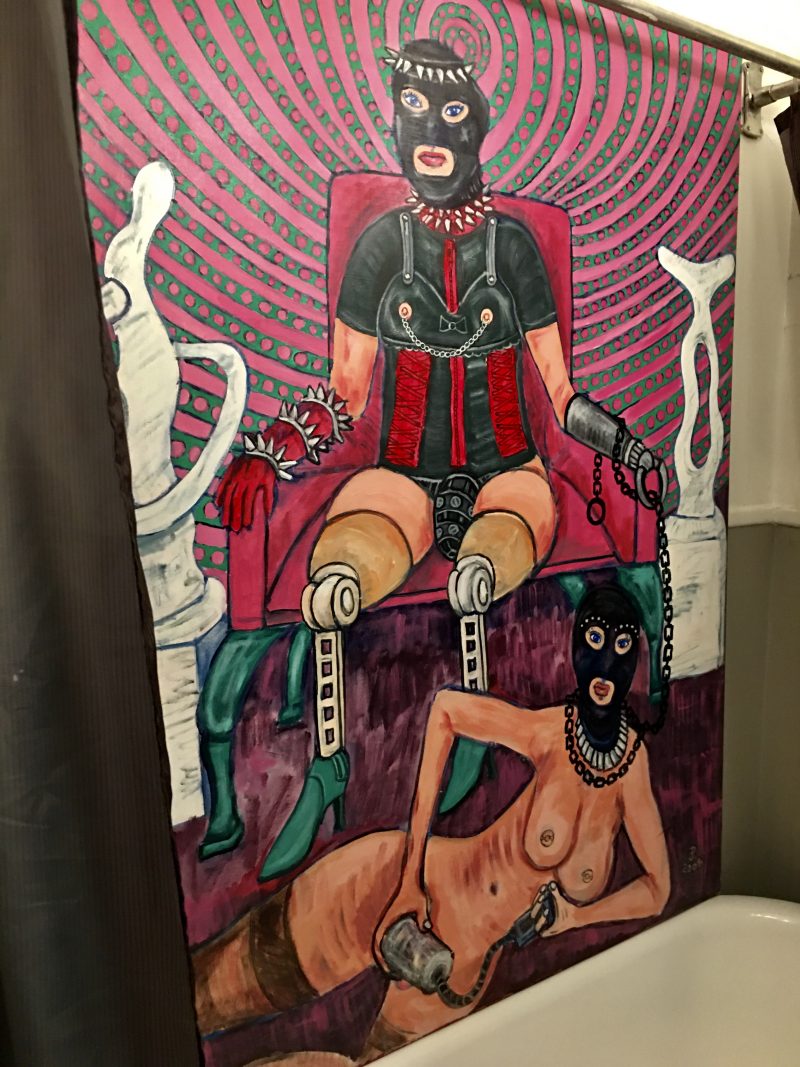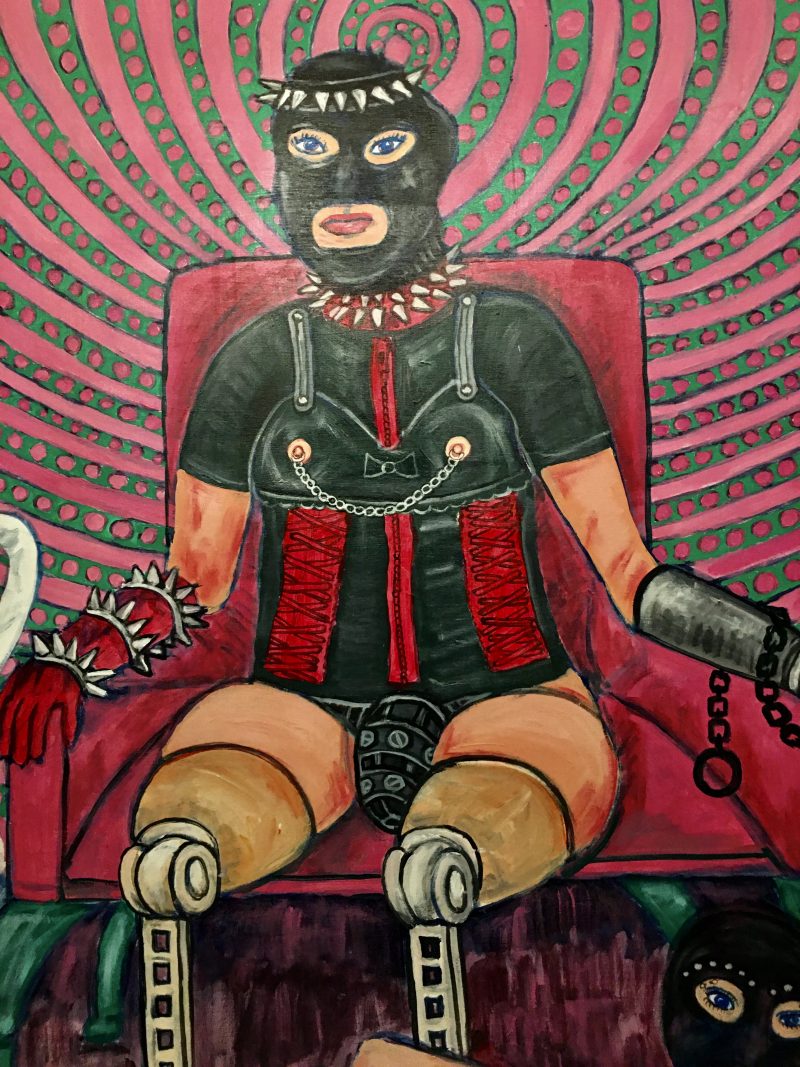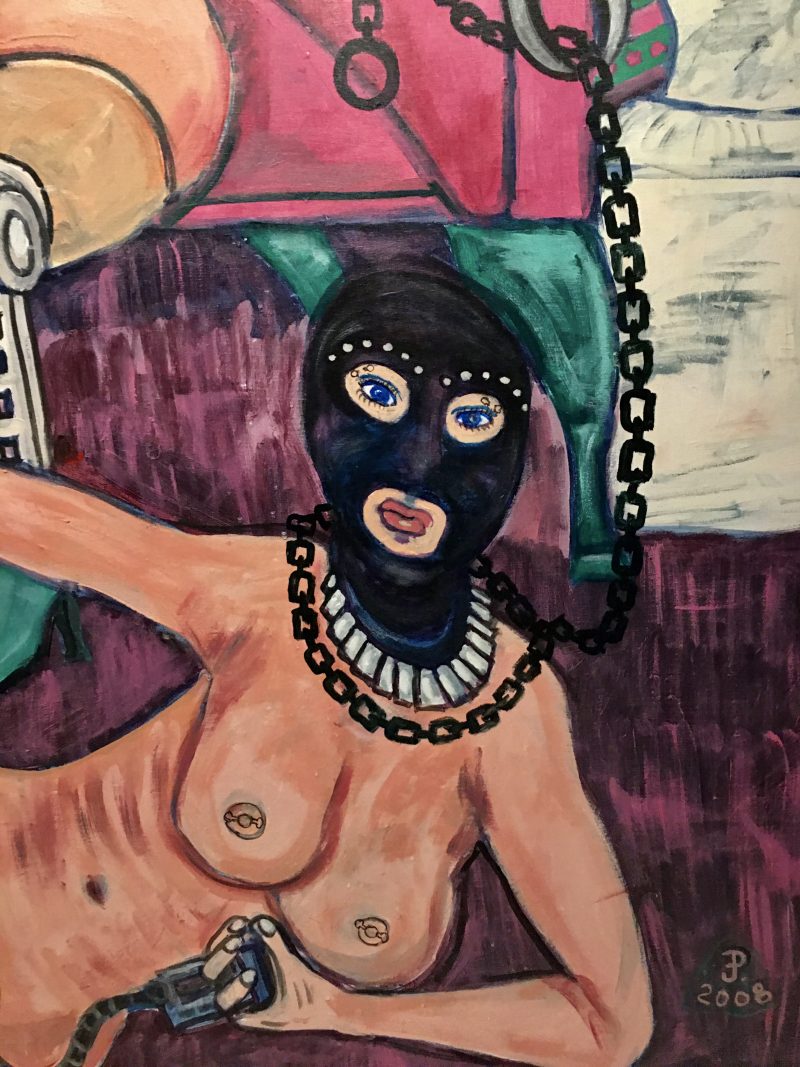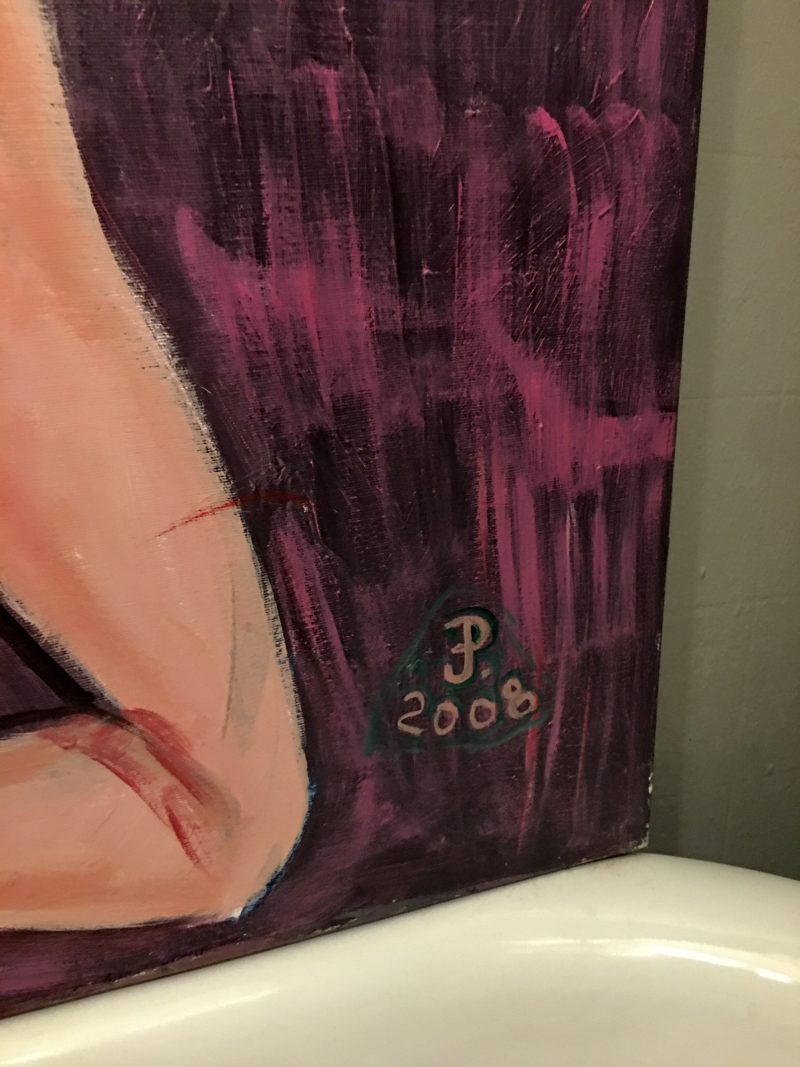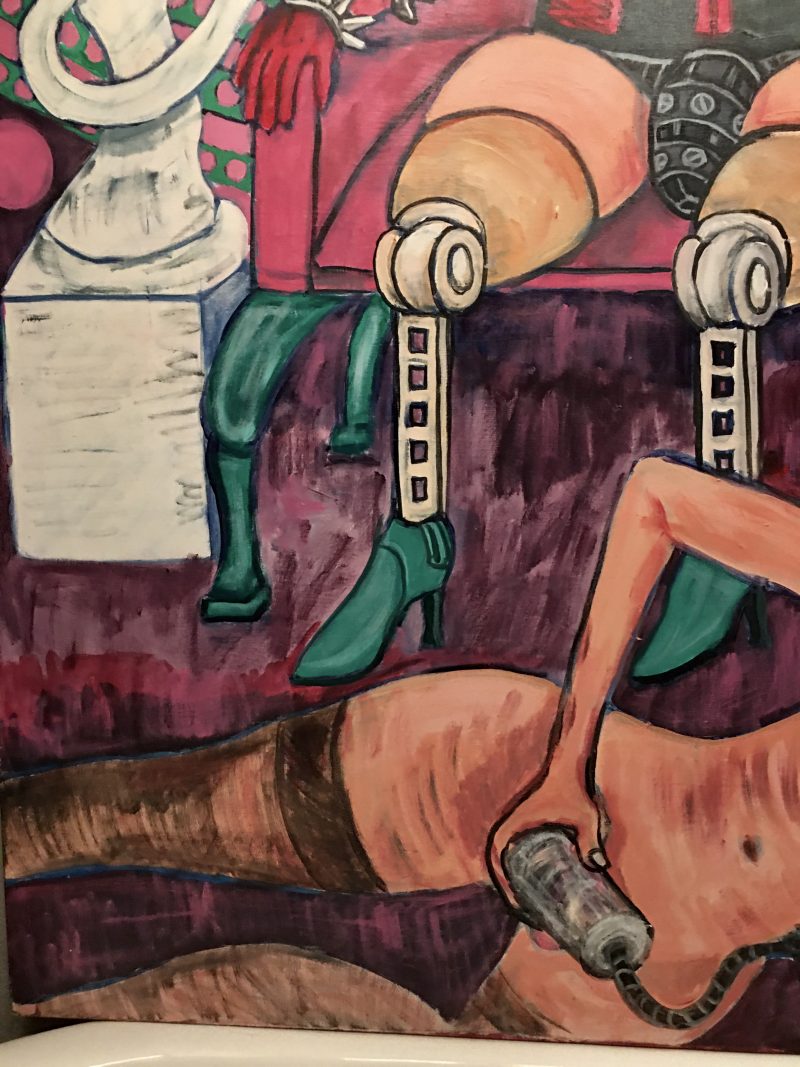Outsider Painting Gallerist Portrait by JP Danys, Ottawa Canada
Mixed Media Painting on Found Canvas, by Outsider (self taught) painter J.P. DANYS, Ottawa, Canada. Titled “The Gallerist, 2006”, Signed & dated in lower front & verso of the painting. Measures 40 inches width x 60 inches height. $1200. NOW $600
*Soon to be featured in a book on Canadian Outsider artists.
JP Danys lives in Ottawa, where he repairs bicycles, paints and sculpts. The world of JP’s paintings & sculptures is urban, fantastic and cautionary. Street scenes are populated with punks, aliens, angels and political figures. Skies are filled with fire and ash, airplanes and flying saucers. Often reclusive, JP hopes to enlighten people with his artwork, and hopefully rid himself of his great shyness.
The term “Outsider Art” has been kicked around, shifted, made into movies and possibly become meaningless since it was coined by art critic Roger Cardinal in 1972 as a kind of English equivalent to the French term, Art Brut. Generally thought of as art operating outside of the artistic fashion of the day, it has variously been interpreted to include (or exclude): art made by children, art made by the insane, art by untrained artists or by artists who don’t live in major cities, art by alien abductees, art by the incarcerated, etc.
Past Group Exhibit Statement: 2010
Being a member of La Petite Mort has been empowering for JP. Unable to function within society in accordance with conventional norms and processes for much of his adult life, JP has struggled for assistance with daily living tasks as essential as finding an apartment to every-day transactional communication skills. The Gallery has provided JP with a place to feel welcome and to express himself freely. In return, JP adds to the Gallery exhibit his unabashedly naive art form in a way that affords dignity to his humanity and to his pain.
“It was common for me to see all types of creatures linger outside my gallery which I ran from 2005 to 2015. They would peek through the window at the artwork but would never come in. Some were homeless. Some were addicts. Some dealt with mental health issues. All were hesitant to venture in. My policy was that all were welcome. I did, however, maintain two basic rules for obvious reasons: no use of drugs on the premises and no disturbing of other patrons. I would find myself often going outside, to invite them in. But, despite my open invitations, many wished not to do so.
One particular individual was a fellow named JP. He took months to finally come in the gallery. When he did, he entered boldly and immediately exclaimed, “I am an artist too, you know.”
After several weeks of slowly getting to know JP, I asked him to describe his work to me. He spoke of his paintings, which I would eventually exhibit in group shows much to the horror of several uptight locals. But it was the description of his sculptures that really captured my interest.
JP had attempted to describe that he “lived with his creations.” To me, this seemed to be what most artists were accustomed to. JP insisted I come to his home to see for myself. Studio visits are a common practice for art dealers or gallerists but I had a feeling that, in this case, I’d be up for a unique visual feast. I was not prepared for what was about to see.
JP lived in a government subsidized housing building. His unit was one of the smaller studio apartments in the basement. The incredibly small studio was filled to capacity with life size sculptures of people, all women, dressed in what seemed to be thrift shop finds, along with disheveled wigs and badly applied makeup. It was a blast to the senses. JP explained how they were constructed. He would use hundreds of manipulated wire coat hangers to shape the body, limbs and head. He would then apply papier-mâché to cover the “bones” of the sculptures, paint them white with gesso, apply facial features & makeup, nail color on some, add the clothing and wig, and would christen them with individual names. I do not recall any of the names of the wonderful creatures. Most of the sculptures were standing, but some were seated, and one was laying on the bed. I suspected that JP was experiencing personal gender identity questions and this may have been one way to create, adapt, and experiment his way through them. JP felt the need to clarify that he did not portray these sculptures as lovers. Rather, he referred to them as friends who helped him combat his loneliness.
JP decided to show me a special surprise. He removed the skirt and underwear of one of the standing sculptures. I braced myself for what was about to be revealed. JP lifted her bulky sweater, and pointed and her belly and said “Look, her baby”.
On each side of the sculpture’s extended belly was an opening, covered in clear plexi. One side allowed light to come in to make it possible to look inside via the other opening. I peered into opening. I could see a baby doll sleeping peacefully within her mother’s full belly. I was simply overwhelmed. I knew I was seeing something at its purest form; an extremely raw emotion; something that may have been lacking in JP‘s difficult life.
I burst into tears immediately after leaving JP’s tiny apartment. I knew I’d witnessed something unique and intimate. I also realized that these sculptures had to remain his secret. I could not present them to the public and risk having him be ridiculed.
Soon after my visit, JP came to the gallery. He announced that he had destroyed all the sculptures, except for one, which he proceeded to give me. When I asked him why he had done this to all of his incredible sculptures, JP simply said “I no longer need them.”
What is Outsider Art:
Outsider Art is art by self-taught or naïve art makers. Typically, those labeled as outsider artists have little or no contact with the mainstream art world or art institutions. In many cases, their work is discovered only after their deaths. Often, outsider art illustrates extreme mental states, unconventional ideas, or elaborate fantasy worlds.
The term outsider art was coined by art critic Roger Cardinal in 1972 as an English synonym for art brut (French: [aʁ bʁyt], “raw art” or “rough art”), a label created by French artistJean Dubuffet to describe art created outside the boundaries of official culture; Dubuffet focused particularly on art by those on the outside of the established art scene, using as examples psychiatric hospital patients and children.
Outsider art has emerged as a successful art marketing category; an annual Outsider Art Fair has taken place in New York since 1993, and there are at least two regularly published journals dedicated to the subject. The term is sometimes misapplied as a catch-all marketing label for art created by people who are outside the mainstream “art world” or “art gallery system”, regardless of their circumstances or the content of their work. A more specific term, “outsider music“, was later adapted for musicians.
